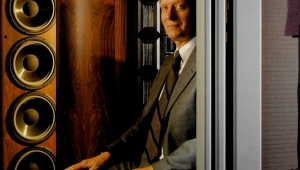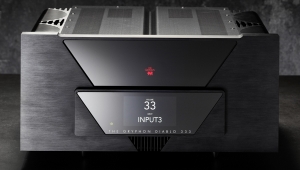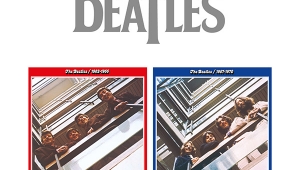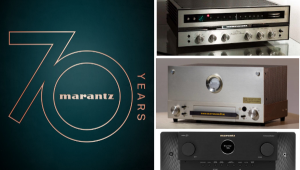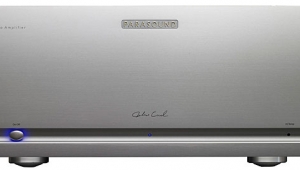| Columns Retired Columns & Blogs |
Music Critics Discuss Hi-Rez Audio
The first National Critics Conference in US history took place May 25–29 at the Omni Hotel in downtown Los Angeles. Subtitled "Critical Unity in Critical Times," the gathering brought together US and Canadian members of organizations devoted to visual arts, dance, jazz, classical music, and theater criticism.
The conference began with a keynote address, "Seeing the Critic as Critical," delivered by producer, director, and social activist Norman Lear, whose credits range from All in the Family’s infamous Archie Bunker to the recent purchase of Concord Jazz/Fantasy Records. The more than 450 attendees were then free to attend three days’ worth of cross-disciplinary panels and sessions devoted to specific field(s) of expertise. Classical critics were as free to attend "African-American Perspectives on Jazz Journalism" as jazz critics were to drop in on "Photography as Criticism."
Several revelations shared in "Slipped Discs: The Classical Recordings Crisis," a panel sponsored by the Music Critics Association of North America (MCANA), should prove of special interest to Stereophile readers. The panel, moderated by Rick Ginell, regular contributor to the Los Angeles Times, American Record Guide, and Daily Variety, included: Rochelle Abramson, first-section violinist of the LA Philharmonic; John Kieser, head of operations at SFS Media and producer of the San Francisco Symphony’s multichannel Mahler series on hybrid SACDs, which has won a Grammy for engineering and two for performance; David Mermelstein, classical music critic of the LA Daily News and contributor to the New York Times; and this freelance audio and music critic. Although no one took an actual count, attendees probably numbered close to 45.
John Kieser shared the good news. The SFSO’s first six Mahler discs—including the stunning, recently released performance of Symphony 9—have so far sold at least 65,000 copies. While the Symphony had initially expected that the bulk of sales would be to local SFSO patrons, sales have been equally divided among Bay Area markets, national markets, and international outlets. It is not known how many purchasers own SACD players or multichannel systems, or to what extent the discs’ high-resolution playback options have motivated their purchases.
After Keiser completed his presentation, I discussed my own genesis as a critic, and the many rewards and joys of owning a high-end system. I then asked how many critics in the room owned an SACD, DVD-Audio, or multiformat player, and how many had multichannel systems.
Exactly six critics copped to owning high-resolution players. (I confess to sticking to units I have received for review until Theta releases its long awaited SACD/DVD-A option for the Theta Gen. VIII DAC/preamp.) Exactly two critics, one an 84-year-old who writes little these days, own multichannel systems of undetermined quality. One critic asked what SACD was.
While the financial reality is that more and more US critics are low-paid freelancers who can’t afford high-end systems, let alone healthcare, their inability to evaluate the benefits of high-resolution formats does not bode well for generating mass demand for better sound. To make matters worse, at least two critics who value SACD and DVD-A revealed that their editors routinely cut references to sound quality from their reviews, considering them irrelevant to the average reader.
Dealers and industry reps would be wise to invite music critics in their territories to demonstrations of high-resolution formats, in which hi-rez recordings from multiple genres could be evaluated in silence. Publications such as The New Yorker, considered one of the best US sources of classical criticism, have finally decided to review music DVDs along with CDs. Why not hi-rez recordings as well, with special attention to their benefits? There is a potential audience waiting to discover itself, and informed critics are key to its awakening.
- Log in or register to post comments
